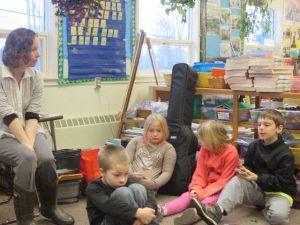
morning sky in Thetford
Dear Parents,
As February approaches, and our Day 100 Celebration is in sight, (within a couple of weeks) it is exciting and reassuring to celebrate one of the most important milestones of second grade……recognizing the importance of the respectful classroom community, that we have all built together. It has been an ongoing work in progress, but one that has grown from sharing friendships, celebrating our strengths and differences, working collaboratively , and navigating opportunities to grow together, as they arise.
Martin Luther King Day….…written by Myra Cohn Livingston
 The dream
The dream
of Martin Luther King
will happen
in some far-off Spring
when winter ice
and snow are gone.
One day, the dreamer
in gray dawn
www.biography.com/people/martin-luther-king-jr-9365086
will waken to a blinding night
where hawk and dove in silent flight

winter morning sky
brush wings together
on a street
still thundering
with ghostly feet
And soul will dance
and soul will sing
and march with
Martin Luther King.

research and report writing about wetland animals in the winterWriting
Science Writing
We will soon complete our research reports on the survival of animals in the in the wetlands. This report-writing standard for second graders addresses the question: What are the structures and skills that animals have them help them to survive in the Winter, in the wetlands? They have learned how to gather facts and group them into such categories as habitat/shelter; predators; food gathering; and body parts. They then link the categories to the focus of their reports so that their content does indeed support the premise that animals have unique structures that impact their survival in the Wetlands. Report writing is challenging as the children are trying to sift through articles and books and select only the information that specifically pertains to their overall topic. The intent is that they will create a meaningful piece of writing, that provides supporting evidence for this premise.


frost-making experiment
Science
Our Weather Unit study has brought in a surge of weather vocabulary, enabling them to become official meteorologists. Through their daily weather observations and journaling, the children have become quite adept at reading weather maps and making weather predictions. Using their knowledge of different cloud formations, the time of the year, the earth’s rotation, and local conditions, they are learning to gather information and predict what the conditions might be during the course of a couple of days. They are also learning how to recognize the types of weather associated with varying fronts. As weather forecasters they can begin to see the many components that effect our weather conditions including cloud formations, temperature, humidity, wind speed, and wind direction.
Rachel Donnegan, Montshire Museum educator, visited our classroom recently to guide us through weather-related experiments. She helped simulate cloud formation, and also demonstrated the development of frost.

working with place value Math
Math
The children are currently learning and exploring how to identify, collect and sort data by common attributes. The then learn how to design and carry out a data investigation. As they proceed with the data collection, children learn to organize and represent this data that they collect by playing games and taking surveys of their favorite things. Through the applications of equations, Venn diagrams, and the ordering and describing of numerical data, they learn a variety of representational methods. The basis of their data collection has developed from examining common data, like “how many pockets”; “how many children with sneakers”; to surveying each other’s interests in sports, favorite colors, etc,to examining trends in weather such as temperatures and precipitation.
They have also been developing more skills related to place value, counting, and comparison of numbers to 1,000. As they learn about place value they are matching up the digits of a number with ones, tens, hundreds, and thousands. Writing expanded notations is helping to further familiarize them with larger numerals.

As a class we have shared many poignant reflections and thoughts during our visits with Plato and Ray, since the beginning of the school year. With those visits concluding, and Plato’s recent passing, we have felt privileged to share the last days of his life, caring for him during his visits, singing to him, and reading him stories. We have learned how to express our sadness, and how to share these sentiments with our classmates and with Ray. Ray and Plato taught us about the importance of service to others, loyalty, and acceptance. Our wish is to learn those same attributes and apply them both in our learning and in our friendships.
Sincerely,
Joanna

Cookies made for our class by Ray and Mary Chin
